Quick Look at Core M 5Y70 and Llama Mountain
by Joshua Ho on September 10, 2014 2:36 PM EST
Today, Intel showed off a reference design codenamed Llama Mountain, which is an incredibly thin tablet running Intel's Core M 5Y70. While we've covered Core M previously it's worth going over again for those unfamiliar with this chip. For reference, it's the first shipping implementation of Broadwell and designed to target a 4.5W TDP. This means that it's fully possible to integrate a full Windows PC into a thin, fanless formfactor. We've already seen the announcement of the ThinkPad Helix 2 with Core M, so it's clear that this new chip can support such formfactors.
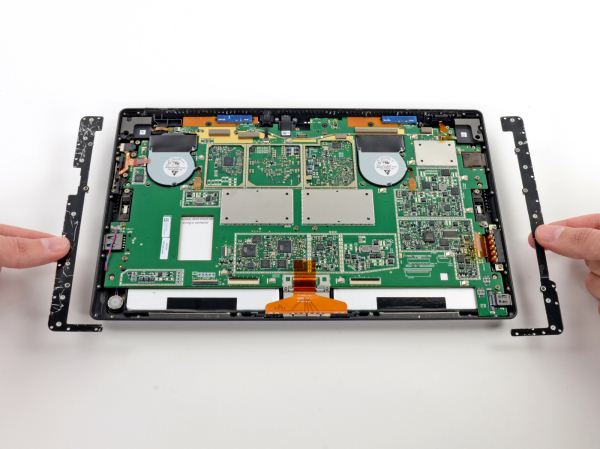
One of the biggest surprises for me was how much smaller the PCB was in Llama Mountain. For reference, the photo above is from our Surface Pro teardown. The PCB takes up almost the entirety of the tablet, and there's a great deal of extra thickness from the fans in the device. I managed to get a photo of the entire Llama Mountain board below. The second green PCB contains the storage (a SanDisk iSSD solution) and a WiFi chip (Intel 7260AC).
The resulting tablet is incredibly light at 684 grams. For reference, the iPad Air is 469 grams. Of course, the real question is whether the extra ~200 grams is worth it. To get an idea of whether or not it is, Intel showed the performance of Llama Mountain in Sunspider 1.0.2 and 3DMark Ice Storm Unlimited. I've put the results into the graphs below.
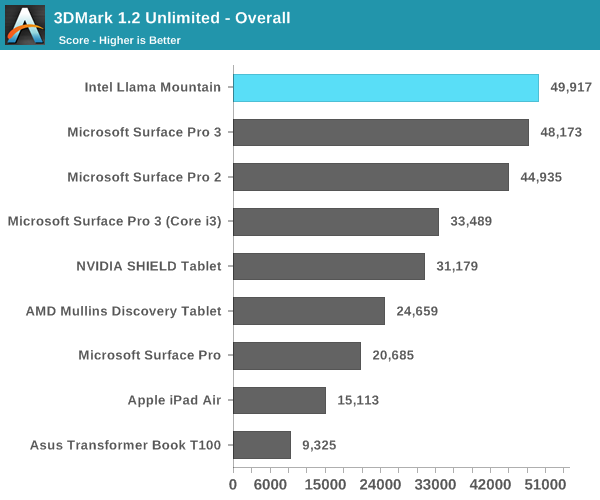
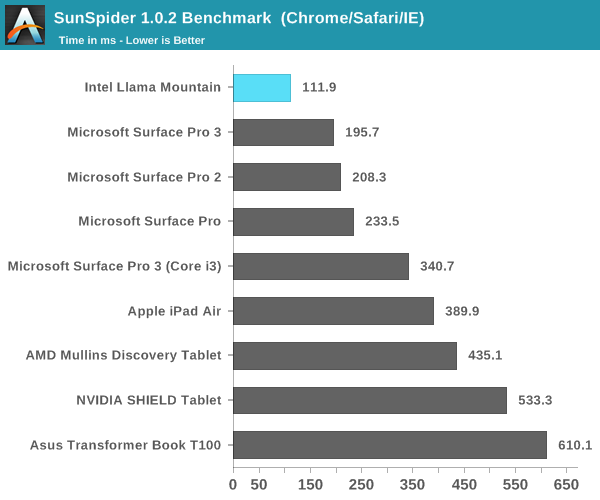
Needless to say, the Core M 5Y70 is the fastest tablet that we have test results for. The Surface Pro line has 15W TDP parts, while Core M operates in a 4.5W TDP. However, for this reference design Intel is leveraging the large amount of surface area to drive a 6W TDP. Despite this, it seems that it manages to equal or better the Surface Pro line in performance. Intel also emphasized that only an aluminum back cover would be needed to dissipate the heat to keep costs down. In fact, there were versions of Llama Mountain with copper and gold-plated back covers, but had no noticeable effect in performance. I'm definitely looking forward to future tablets and 2-in-1 devices launching with this chip, as this could enable laptop levels of performance in a tablet formfactor without the compromise we see now.


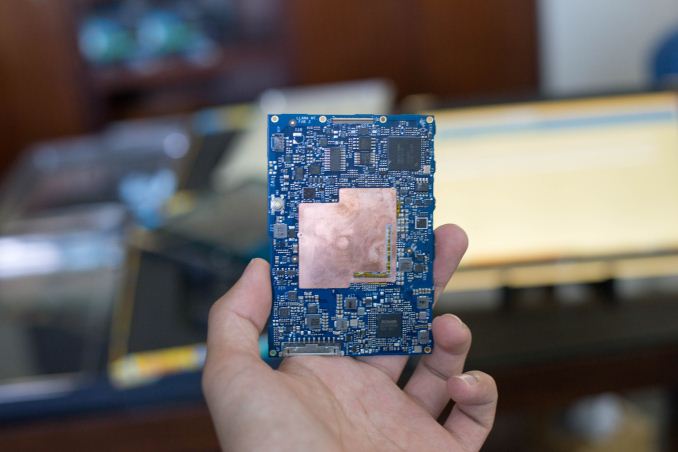
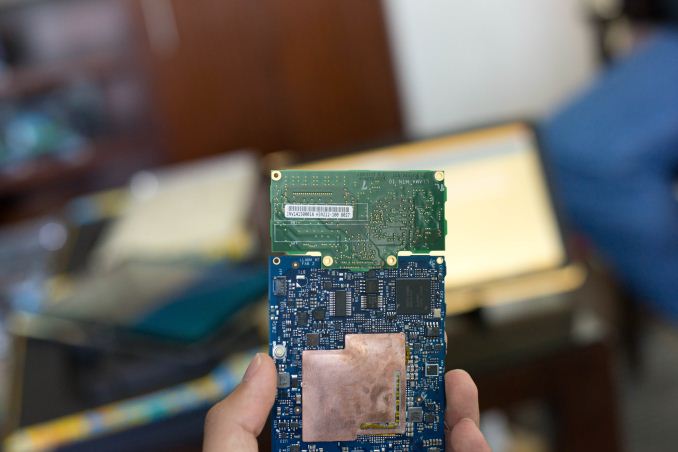









81 Comments
View All Comments
Pissedoffyouth - Wednesday, September 10, 2014 - link
Joshua, could you please add the results for the Atom z37xx chips, they are the closest Intel competitors at that kind of TDP?Pissedoffyouth - Wednesday, September 10, 2014 - link
The SDP is 2 watts, but the TDP of the Atom is 4w in case anyone is confusedStanand - Wednesday, September 10, 2014 - link
If you haven't seen it, Tech Report includes the ASUS Transformer T100 (Atom Z3740) in their charts: http://techreport.com/news/27039/preliminary-core-...">Preliminary Core M benchmarks hint at Broadwell's potentialJoshHo - Thursday, September 11, 2014 - link
Done, they should be updated soon.Pissedoffyouth - Thursday, September 11, 2014 - link
Thanks - that really puts it into perspective!OrphanageExplosion - Wednesday, September 10, 2014 - link
So based on the SunSpider test, a Broadwell-M mobile chip with a 2.0GHz turbo isn't just matching a Haswell-U processor with a 2.9GHz turbo and 3x TDP, but is almost doubling performance too?fokka - Wednesday, September 10, 2014 - link
i think the 5y70 is clocked at 1.1ghz with a turbo of 2.6ghz for both cores. performance seems incredible here, but those two quick benchmarks won't tell us the whole story just yet.fteoath64 - Saturday, September 13, 2014 - link
It is hard to believe if both cores were turbo at 2.6Ghz that this chip could just consume 4.5w TDP!!!. This does NOT seem possible at all. Yeah, if that throttling is just a few seconds, it would jack up the overall score but it could alternate from 2.6Ghz an 1.3Ghz for a large portion of the benchmark to give the indicated score. I would expect the TDP would be somewhere around the 12w zone. We need Anandtech to do power measurements during the benchmarks to see where the power spike were and how long they lasted.Wilco1 - Wednesday, September 10, 2014 - link
Yes, if anyone else believes that Broadwell provides 3x the IPC of Haswell, they are going to be quite disappointed...frostyfiredude - Wednesday, September 10, 2014 - link
It's the turbo to 2.6Ghz version, plus the Core M tablet seems to be running IE11 where the older Surfaces are either in a power saver mode or ran in Chrome instead. SP2 here, I get 115ms in IE11 in balanced power profile.